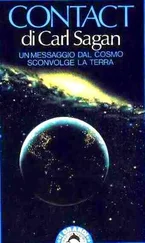Carl Sagan - Broca's Brain - The Romance of Science
Здесь есть возможность читать онлайн «Carl Sagan - Broca's Brain - The Romance of Science» весь текст электронной книги совершенно бесплатно (целиком полную версию без сокращений). В некоторых случаях можно слушать аудио, скачать через торрент в формате fb2 и присутствует краткое содержание. Жанр: Физика, на английском языке. Описание произведения, (предисловие) а так же отзывы посетителей доступны на портале библиотеки ЛибКат.
- Название:Broca's Brain: The Romance of Science
- Автор:
- Жанр:
- Год:неизвестен
- ISBN:нет данных
- Рейтинг книги:3 / 5. Голосов: 1
-
Избранное:Добавить в избранное
- Отзывы:
-
Ваша оценка:
- 60
- 1
- 2
- 3
- 4
- 5
Broca's Brain: The Romance of Science: краткое содержание, описание и аннотация
Предлагаем к чтению аннотацию, описание, краткое содержание или предисловие (зависит от того, что написал сам автор книги «Broca's Brain: The Romance of Science»). Если вы не нашли необходимую информацию о книге — напишите в комментариях, мы постараемся отыскать её.
Broca's Brain: The Romance of Science — читать онлайн бесплатно полную книгу (весь текст) целиком
Ниже представлен текст книги, разбитый по страницам. Система сохранения места последней прочитанной страницы, позволяет с удобством читать онлайн бесплатно книгу «Broca's Brain: The Romance of Science», без необходимости каждый раз заново искать на чём Вы остановились. Поставьте закладку, и сможете в любой момент перейти на страницу, на которой закончили чтение.
Интервал:
Закладка:
Three of the more fashionable and more interesting theories of climatic change should be mentioned. The first involves a change in celestial mechanical variables: the shape of the Earth’s orbit, the tilt of its axis of rotation, and the precession of that axis all vary over long periods of time because of the interaction of the Earth with other nearby celestial objects. Detailed calculations of the extent of such variations show that they can be responsible for at least a few degrees of temperature variation, and with the possibility of positive feedbacks this might, by itself, be adequate to explain major climatic variations.
A second class of theories involves albedo variations. One of the more striking causes for such variations is the injection into the Earth’s atmosphere of massive amounts of dust-for example, from a volcanic explosion such as Kiakatoa’s in 1883. While there has been some debate on whether such dust heats or cools the Earth, the bulk of present calculations shows that the fine particulates, very slowly falling out of Earth’s stratosphere, increase the Earth’s albedo and therefore cool it. There is recent sedimentological evidence that past epochs of extensive production of volcanic particulates correspond in time to past epochs of glaciation and low temperatures. In addition, episodes of mountain building and the creation of land surface on the Earth increase the global albedo because the land is brighter than the water.
Finally, there is the possibility of variations in the brightness of the Sun. We know-from theories of solar evolution-that over many billions of years the Sun has been getting steadily brighter. This immediately poses a problem for the most ancient climatology of the Earth, because the Sun should have been 30 or 40 percent dimmer some 3 or 4 billion years ago; and this is enough, even with the greenhouse effect, to have resulted in global temperatures well below the freezing point of seawater. Yet there is extensive geological evidence-for example, underwater ripple marks, pillow lavas produced by the quenching of magma in the ocean, and fossil stromatolites produced by oceanic algae-that there was ample water then available. One proposed way out of this quandary is the possibility that there were additional greenhouse gases in the early atmosphere of the Earth-especially ammonia-which produced the required temperature increment. But apart from this very slow evolution of the brightness of the Sun, is it possible that shorter-term fluctuations occur? This is an important and unsolved problem, but recent difficulties in finding neutrinos-which should, according to current theories, be emitted from the interior of the Sun-have led to the suggestion that the Sun is today in an anomalously dim period.
The inability to distinguish between the various alternative models of climatic change might appear to be nothing more than an unusually annoying intellectual problem-except for the fact that there appear to be certain practical and immediate consequences of climatic change. Some evidence on the trend of global temperature seems to show a very slow increase from the beginning of the industrial revolution to about 1940, and an alarmingly steep decline in global temperature thereafter. This pattern has been attributed to the burning of fossil fuels, which has two consequences-the liberation of carbon dioxide, a greenhouse gas, into the atmosphere, and the simultaneous injection into the atmosphere of fine particles, from the incomplete burning of the fuel. The carbon dioxide heats the Earth; the fine particles, through their higher albedo, cool it. It may be that until 1940 the greenhouse effect was winning, and since then the increased albedo is winning.
The ominous possibility that human activities may cause inadvertent climate modification makes the interest in planetary climatology rather important. There are worrisome positive feedback possibilities on a planet with declining temperatures. For example, an increased burning of fossil fuels in a short-term attempt to stay warm can result in more rapid long-term cooling. We live on a planet in which agricultural technology is responsible for the food of more than a billion people. The crops have not been bred for hardiness against climatic variations. Human beings can no longer undertake great migrations in response to climatic change, or at least it is more difficult on a planet controlled by nation-states. It is becoming imperative to understand the causes of climatic variations and to develop the possibility of performing climatic re-engineering of the Earth.
Oddly enough, some of the most interesting hints on the nature of such climatic changes appear to be coming from studies not of the Earth at all, but of Mars. Mariner 9 was injected into Martian orbit on November 14, 1971. It had a useful scientific lifetime of a full terrestrial year and procured 7,200 photographs, covering the planet from pole to pole, as well as tens of thousands of spectra and other scientific information. As we saw earlier, when Mariner 9 arrived at Mars there was virtually no detail whatever to be seen on the surface because the planet was in the throes of a great global dust storm. It was readily observed that the atmospheric temperatures increased, but the surface temperatures decreased during the dust storm, and this simple observation immediately provides at least one clear case of the cooling of a planet by the massive injection of dust into its atmosphere. Calculations have been performed that use precisely the same physics for both the Earth and Mars and treat them as two different examples of the general problem of the climatic effects of massive dust injection into a planetary atmosphere.
There was another and entirely unexpected climatological finding by Mariner 9-the discovery of numerous sinuous channels, replete with tributaries, covering the equatorial and mid-latitudes of Mars. In all cases where relevant data exist, the channels are going in the proper direction-downhill. Some of them show braided patterns, sand bars, slumping of the banks, streamlined teardrop-shaped interior “islands” and other characteristic morphological signs of terrestrial river valleys.
But there is a great problem with the interpretation of the Martian channels as dry riverbeds, or arroyos: liquid water apparently cannot exist on Mars today. The pressures are simply too low. Carbon dioxide on Earth is known as both a solid and a gas, but never as a liquid (except in high-pressure storage tanks). In the same way, water on Mars can exist as a solid (ice or snow) or as vapor, but not as a liquid. For this reason some geologists are reluctant to accept the theory that at one time the channels contained liquid water. Yet they are dead ringers for terrestrial rivers, and at least many of them have forms inconsistent with other possible structures such as collapsed lava tubes, which may be responsible for sinuous valleys on the Moon.
Furthermore, there is an apparent concentration of such channels toward the Martian equator. The one striking fact about the equatorial regions of Mars is that they are the only places on the planet where the average daytime temperature is above the freezing point of water. And no other liquid is simultaneously cosmically abundant, of low viscosity, and with a freezing point below Martian equatorial temperatures.
If, then, the channels were made by running water on Mars, that water apparently must have run at a time when the Martian environment was significantly different from what it is today. Today Mars has a thin atmosphere, low temperatures and no liquid water. At some time in the past, it may have had higher pressures, perhaps somewhat higher temperatures and extensive running water. Such an environment appears to be more hospitable to forms of life based on familiar terrestrial biochemical principles than the present Martian environment.
Читать дальшеИнтервал:
Закладка:
Похожие книги на «Broca's Brain: The Romance of Science»
Представляем Вашему вниманию похожие книги на «Broca's Brain: The Romance of Science» списком для выбора. Мы отобрали схожую по названию и смыслу литературу в надежде предоставить читателям больше вариантов отыскать новые, интересные, ещё непрочитанные произведения.
Обсуждение, отзывы о книге «Broca's Brain: The Romance of Science» и просто собственные мнения читателей. Оставьте ваши комментарии, напишите, что Вы думаете о произведении, его смысле или главных героях. Укажите что конкретно понравилось, а что нет, и почему Вы так считаете.











